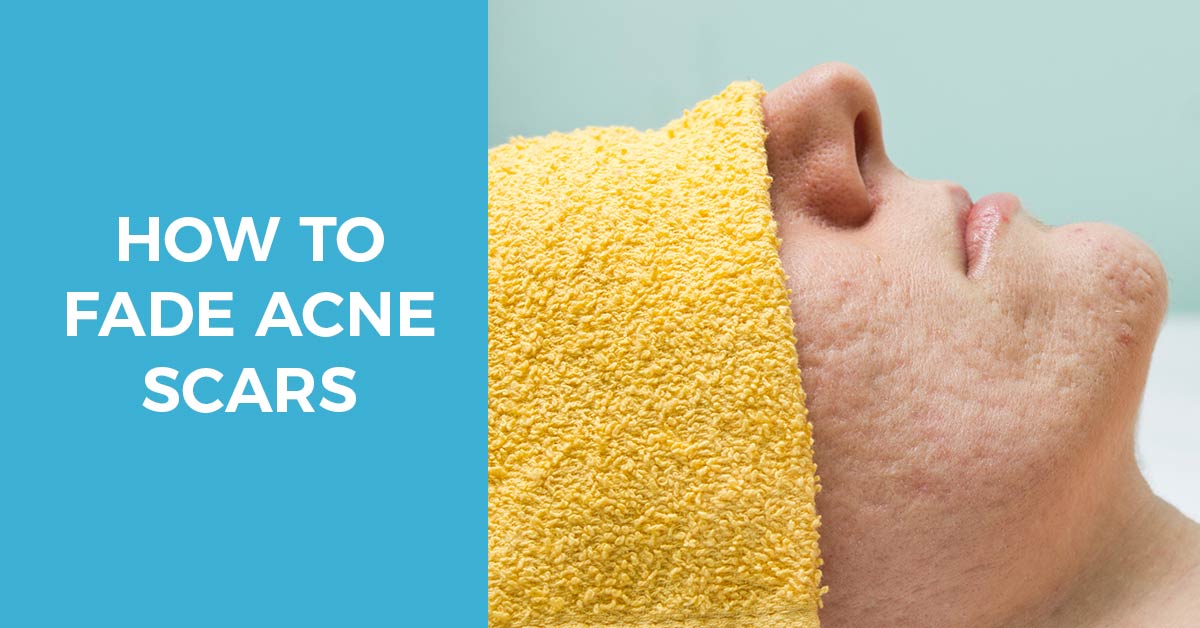Contents
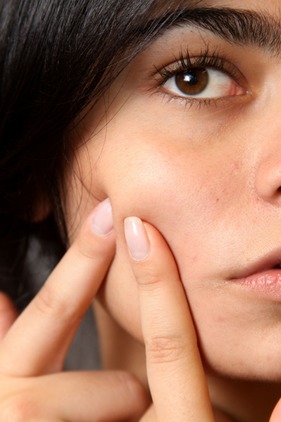 Oh acne, the skin issue that sucks away all our confidence. It affects the best of us. And, just when we think we’ve finally tackled it, we’re left with a new problem – the infamous acne scar. Rearing its ugly head, this scar lingers around as a constant reminder, lest we should forget the trauma of acne.
Oh acne, the skin issue that sucks away all our confidence. It affects the best of us. And, just when we think we’ve finally tackled it, we’re left with a new problem – the infamous acne scar. Rearing its ugly head, this scar lingers around as a constant reminder, lest we should forget the trauma of acne.
An acne scar can show itself to us after a stubborn spot has finally disappeared, hanging around for months before finally fading. But some of them may require treatment.
So what should you do when faced with yet another hurdle in your journey for perfect skin?
Below, we discuss what causes these pesky acne scars before offering you some handy tips and advice on how you can fade them – for good.
What Causes Acne Scars
Acne scars develop when collagen is damaged by the inflammation that occurs deep within your skin. Where your skin used to have normal, healthy tissue, this is replaced by scar tissue, which is thinner and less smooth in appearance. These scars can often appear as depressions along your skin’s surface.
However, not all scars are the same. In fact, there are three different types
- Rolling scars – These have a rippled effect and a round appearance, being caused by bands of tissue developing underneath the skin’s surface.
- Boxcar scars – Usually developing on the temples or cheeks, these have a defined edge, are u-shaped, and are often wider than ice pick scars.
- Pitted (ice pick) scars – These tend to appear on the cheeks and are caused by the bacteria and sebum (oil from the skin) building up in the pores. As the skin becomes inflamed, the tissues are damaged by the pressure being placed on them, which creates a narrow and deep indentation. Their name “ice pick” is derived from how they resemble the look of ice being chiseled repeatedly with an ice pick.
Another common side effect of acne is acne spots (also known as post-inflammatory hyperpigmentation). These make your skin look discolored in appearance, and are caused by excess melanin (the pigment which gives your skin its color) which builds up due to the inflammation caused by the pimples.
The tone of your skin will influence the color of this acne spot, too. Those with lighter skin tones will often find purple or red marks appearing, while darker skin tones may find a brown mark.
You’ll often find that the red or purple marks (hyperpigmentation) disappear after a few months, but acne scars sometimes need more drastic treatments, such as temporary dermal fillers and laser treatments.
How long the scar lingers for differs from person to person, being highly dependent on your skin type. For darker skin tones (e.g. Asian, African American, and Indian people) the skin always produces more pigment. Thus, when the skin is inflamed, its natural response is to start producing even more pigment, which creates the dark spots.
Age can also be a predetermining factor for acne scars. They can be more prominent in older people as the body is no longer able to provide as much structural support (due to diminishing levels of subcutaneous fat and collagen).
However, it’s not all bad news. Even though some people do believe red marks are acne scars, they actually aren’t. If the initial bump caused by your acne has disappeared and the redness is all that remains, it’s likely this isn’t an acne scar. So, over time, it will get better and the redness will die down.
Whether you’ve got dark marks or scars, there are a number of different ways you can fade acne scars in a week or more. And we’ll also share some tips on how you can fade them using natural remedies, too!
4 Ways to Fade Acne Dark Marks
In most cases, the discoloration you see from your dark marks will fade with time. However, if you want to speed up this process, there are a number of things you can do:
1) Fading Acne Dark Marks with Sunscreen
Scarring can be more prominent if you expose your skin to the sun. If your skin’s not sufficiently protected, marks AND scars can be darkened by UVA and UVB rays. And what’s more, as sunlight can penetrate through your clothes, it’s important to take care when using sunscreen – making sure you apply it liberally to your entire body, even if it’s not going to be exposed.
And yes, we hear you, sunscreen can clog your pores which will aggravate your acne, but thankfully, there are some specialist solutions that are incredibly skin-friendly. Just look out for innovative formulas that are labeled as being noncomedogenic as this means they won’t clog your pores. You might also want to keep your eyes peeled for sunscreens that contain niacinamide because this is an anti-inflammatory ingredient that will help reduce the redness of your skin too.
2) Fading Acne Dark Marks with Topical Vitamin C Serum and Retinoids
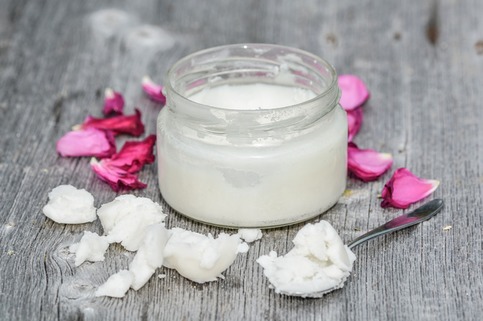 Vitamin C is great for promoting healing and will also help your skin build collagen. Some formulas are designed to be absorbed deep into the skin so they’ll continue working for a long time after you’ve applied it.
Vitamin C is great for promoting healing and will also help your skin build collagen. Some formulas are designed to be absorbed deep into the skin so they’ll continue working for a long time after you’ve applied it.
In contrast, retinoids are a superficial treatment. Retin-A works by causing your skin’s cells to start dividing rapidly, creating more cells that push out those ones that contain the discolored pigment. However, even though this helps reduce those dark marks, it does make your skin incredibly sensitive to the sun. So, always make sure you’re wearing SPF but that you’re thoroughly moisturizing your skin before you go to bed as well.
3) Fading Acne Dark Marks with Chemical Peels
A chemical peel utilizes the application of a number of mild solutions to promote skin regeneration and refinement. The products used contain glycolic acid which promotes cell turnover – this is the process where your skin forms new cells, helping to create an even-looking skin tone.
There are at-home chemical peels you can try. Or, you may want to speak to your dermatologist as they can often prescribe you with something stronger that’s based on your goals and skin type.
We’ve included a video from Nikki Phillippi below, where she discusses how a chemical peel worked for her and her acne scars.
4) Fading Acne Dark Marks with Skin Brighteners
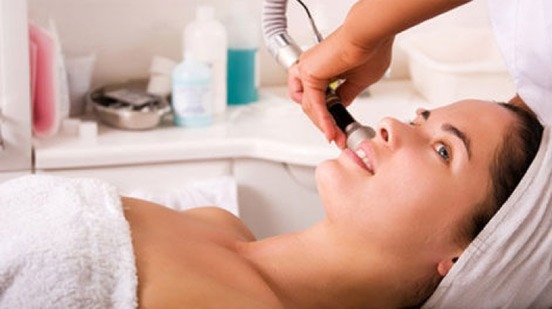 If your acne marks have taken on a browner color, the discoloration may be treated with ingredients that lighten your pigment – including licorice, kojic acid, vitamin C, and retinol. However, if you’ve got a deeper skin tone you should be careful when using products that contain hydroquinone. This may leave a light ring around the dark mark you’re trying to get rid of.
If your acne marks have taken on a browner color, the discoloration may be treated with ingredients that lighten your pigment – including licorice, kojic acid, vitamin C, and retinol. However, if you’ve got a deeper skin tone you should be careful when using products that contain hydroquinone. This may leave a light ring around the dark mark you’re trying to get rid of.
Unfortunately, when it comes to red or pink acne marks that aren’t related to your skin’s melanin or pigment, skin-brightening ingredients don’t work too well. Instead, you should treat these with sun protection, perhaps even undergoing treatment with a pulse-dye laser. This targets the red pigment (hemoglobin) in your skin, which can significantly lighten the area. It tends to take around three treatments for them to disappear completely, but, even after one treatment, you should notice a significant improvement.
Not noticing any improvement after using the above treatments for three months? Then you might need to seek a stronger prescription from your dermatologist, or you may need to look at laser treatment as your next step.
5 Ways to Fade Acne Scars
Due to acne scars being more severe than dark marks, getting the care and attention of your dermatologist or doctor is highly recommended. These scars often require far more intense procedures than we’ve detailed above, which can add to the cost of fading your acne scars.
1) Fading Acne Scars with Steroid Injections
To help fade your scar before it’s even had time to develop properly, you may want to get a steroid injection administered at your dermatologists. As soon as you start to feel a huge pimple appearing, the steroid shot can be given to reduce the inflammation of your spot while also helping to reduce the thickness of the scar. However, this will only reduce how raised the scar is, it won’t do anything to the texture of it.
2) Fading Acne Scars with Dermal Fillers
To even out your skin’s surface, different substances (e.g. hyaluronic acid) can be injected into your scars to elevate their appearance. Even though these types of dermal fillers weren’t a permanent solution before, there is now a long-lasting dermal filler that’s been designed to permanently correct moderate to severe acne scars.
The product is called Bellafill and is the first dermal filler to be approved by the FDA. It differs from other dermal fillers because it contains two ingredients that help fade acne scars. To make your body produce more protein so it can heal itself, it contains 20% polymethylmethacrylate (PMMA). This is made up of tiny balls that create a scaffold-like structure for your skin. And, unlike other fillers that degrade with time, PMMA provides a permanent result because it cannot be absorbed into your skin.
The remaining 80% of the filler is collagen. Overall, the procedure takes around 30 minutes to complete, with most people only requiring one treatment – others may need a slight touch up several months later.
For more information on how the Bellafill dermal filler works for acne, check out this video from Dr. Sandra Lee. She also explains the difference between the scars on her patient so you can see what scars can be treated with the filler.
Alternatively, if you don’t fancy trying dermal fillers, you could opt for temporary ones that you apply like makeup.
3) Fading Acne Scars with Lasers
Collagen can often be remodeled by dermatologists through the use of a laser. Even though they don’t get rid of acne scars completely, they can fade them significantly. Lasers are particularly helpful in getting rid of the redness that forms with your acne scars and marks. For example, red scars are often treated with pulse-dye lasers while older scars that have lost their redness may require a Fraxel laser.
4) Fading Acne Scars with Punch Excisions
This type of procedure is most suited to those with icepick scars because they’re not as wide as boxcar or rolling scars. If this method is used on wider scars, you’ll need to make a bigger punch which can create another scar in the original one’s place.
A dermatologist can carry out punch excisions, first numbing the area before cutting out the scar with a device that looks a little bit like a tiny cookie-cutter! Once removed, they’ll sew the area closed with a single stitch. This is then removed after a few days.
5) Fading Acne Scars with a Mixture of Treatments
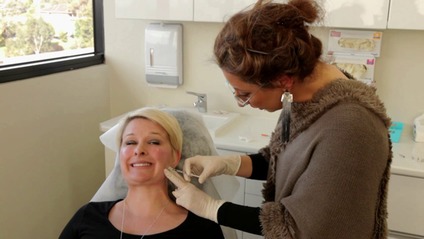 Due to how varied acne scars are, the treatments involved often vary dramatically too. They depend on the individual involved, and can often mean a mixture of treatments are required to achieve the optimum result. For example, the skin may be given a smooth appearance with lasers before fillers are used to lift the area where the scars have made indents in the skin. Then, any deeper scars that are left behind may be removed with punch excisions.
Due to how varied acne scars are, the treatments involved often vary dramatically too. They depend on the individual involved, and can often mean a mixture of treatments are required to achieve the optimum result. For example, the skin may be given a smooth appearance with lasers before fillers are used to lift the area where the scars have made indents in the skin. Then, any deeper scars that are left behind may be removed with punch excisions.
5 Natural Ways to Fade Acne Scars
If, like me, you like to think you’ve tried everything before you turn to medication, you might want to have a go at fading acne scars and dark marks with some natural remedies. Even though these won’t help severe scars, and might only make a slight difference to moderate scars, they can significantly reduce the appearance of some scars and often work wonders at getting rid of dark marks.
Here are some of the remedies suggested by the guys at NaturalLivingIdeas.com
1) Fading Acne Scars with Aloe Vera
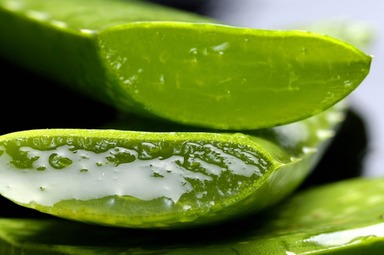 Providing you with a rich source of vitamins, aloe vera gel can help fade scars and heal your skin. And because it’s so gentle on your skin, you don’t have to worry about any irritation or damage. It’ll also leave your skin feeling much healthier and softer, too – win, win!
Providing you with a rich source of vitamins, aloe vera gel can help fade scars and heal your skin. And because it’s so gentle on your skin, you don’t have to worry about any irritation or damage. It’ll also leave your skin feeling much healthier and softer, too – win, win!
You can find aloe vera gel in a lot of pharmacies or drug stores, but if you can get some of the organic stuff, this is best – you could even try growing your own!
To use it, simply break off a small section of one of the leaves and expose the gel by peeling away some of the outer flesh. Massage this gel into your skin, leaving it for up to thirty minutes before using lukewarm water to rinse it off.
2) Fading Acne Scars with Baking Soda
Almost every house will have some baking powder lying around because it has so many different uses – and not just for baking! The crystals that baking soda is made up of are great for exfoliating your skin, all you need to do to create a paste is add some water.
Simply massage this paste into the area of your skin where your scars have formed before leaving it for a couple of minutes. This helps to cleanse your pores, preventing any further pesky pimples from arising. Then, rinse off with lukewarm water before applying your moisturizer. Repeat on alternate days for the best results.
3) Fading Acne Scars with Coconut Oil
 Coconut oil is hailed for its natural healing properties, that’s why it’s perhaps no surprise that it can help fade acne scars too. Melt a quarter of a teaspoon of coconut oil (organic virgin types are the best) in the palm of your hand before using your fingertips to massage it directly into your skin.
Coconut oil is hailed for its natural healing properties, that’s why it’s perhaps no surprise that it can help fade acne scars too. Melt a quarter of a teaspoon of coconut oil (organic virgin types are the best) in the palm of your hand before using your fingertips to massage it directly into your skin.
There’s no need to wash this away after you’ve done this as it’ll continue to work hard at your skin after you’ve applied it. But if you do find the oil’s too heavy, try to leave it on for at least half an hour to get maximum results.
4) Fading Acne Scars with Cucumber
Not only are cucumbers incredibly hydrating but they also contain magnesium and vitamin A and C – the perfect combination for your skin! To use cucumbers to fade your acne scars, just cut off a few slices from an organic cucumber and place them on the scarred areas of your skin. Leave for half an hour (placing some over your eyes for a truly relaxing treatment!) before taking them off and rinsing your face with some cool water. This can be repeated daily.
5) Fading Acne Scars with Honey
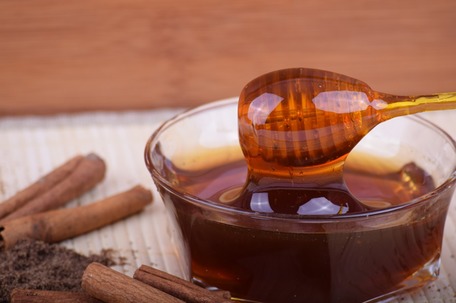 Honey is another natural moisturizer that can help tackle your acne scars. But to get the most out of this product you’ll want to pick up some pure honey – not the processed stuff you get off the shelf. Once you’ve got this, take a small amount and massage it into your scars before leaving it to get to work. And to add more pore-cleansing power, just mix in a teaspoon of cinnamon. This treatment can be used as frequently as you like.
Honey is another natural moisturizer that can help tackle your acne scars. But to get the most out of this product you’ll want to pick up some pure honey – not the processed stuff you get off the shelf. Once you’ve got this, take a small amount and massage it into your scars before leaving it to get to work. And to add more pore-cleansing power, just mix in a teaspoon of cinnamon. This treatment can be used as frequently as you like.
CONCLUSION
Acne scarring happens to the majority of us, so you’re in good company when you’re trying to find different ways to fade acne scars. Each skin type is different, which is why there’s no one-size-fits-all treatment, however, hopefully, the above information will bring you one step closer to that acne- and scar-free skin you’ve been dreaming of
Have you found a treatment that’s helped to fade your acne scars? If so, we’d love to hear about it below!

